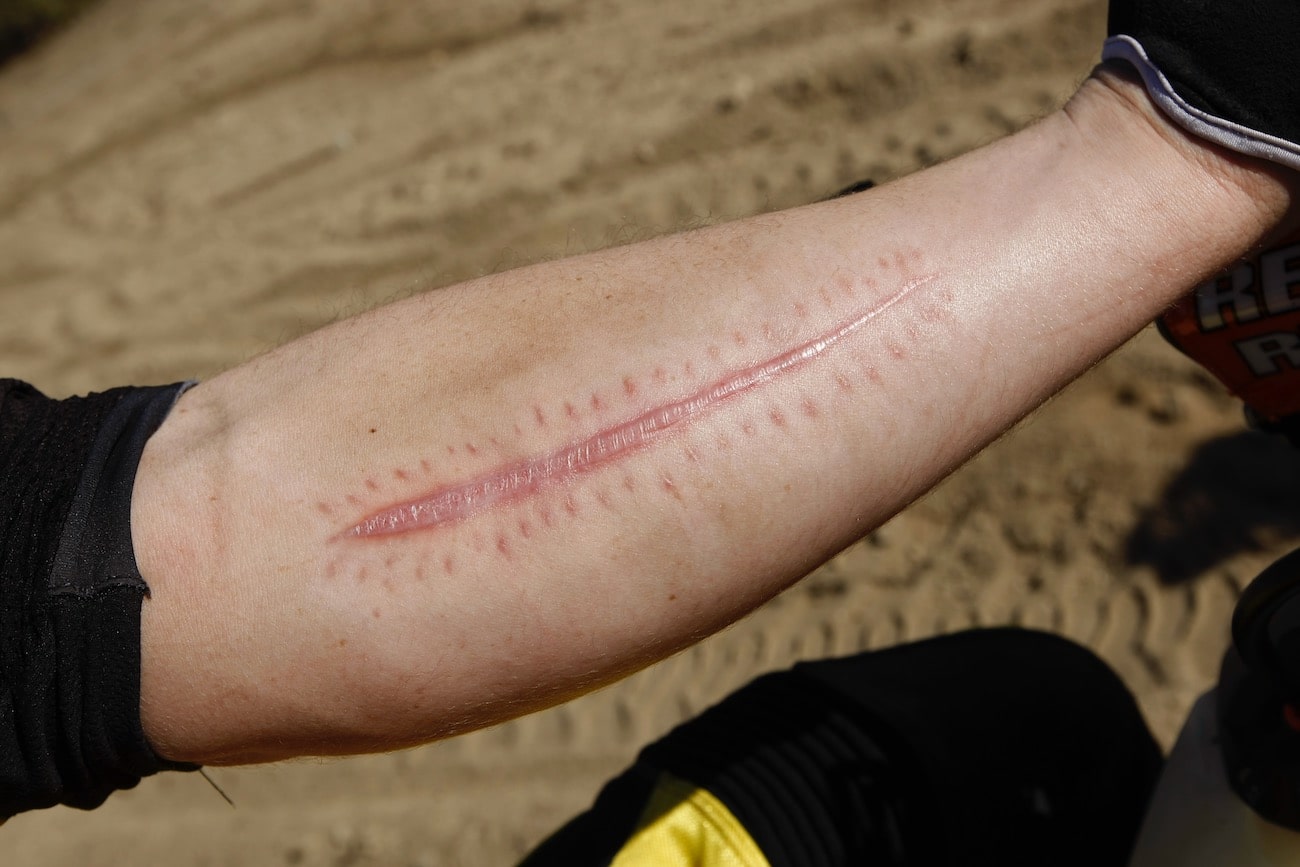TEN THINGS YOU NEED TO KNOW ABOUT DEFEATING ARM PUMP
(1) Arm pump. Arm pump is caused by restricted blood vessels in the forearms. The restriction backs up the blood coming from the heart. While the blood is backing up, more blood continues to be pumped into the forearms. The result is a blood traffic jam. If not for a thin fibrous sheath around the muscles called fascia, the blood would keep pouring in until your forearms looked like Popeye’s. The reason they don’t blow up like a balloon is that the fascia’s sheath is inelastic. The forearms can only expand so far before the limits of the fascia are reached?resulting in forearms that feel rock hard.
(2) Arm-pump surgery. Called a fasciotomy, arm-pump surgery has become popular among professional motocross racers. This surgery is fairly new to orthopedic surgeons and is constantly undergoing modifications. The basic idea is that an incision is made in the forearm’s fascia to eliminate the constriction of muscles during strenuous activity. With the fascia opened up, more blood can pour in before your forearms turn to cement. Be forewarned, there are no guarantees that arm-pump surgery will work. Some incisions close up during the healing process, defeating the purpose of the surgery altogether.

(3) Activity. You can mitigate arm pump by keeping your blood flowing regularly. Be forewarned that riding once every two weeks and being sedentary between rides invites arm pump. Motocross is a physically demanding sport that uses many muscles and revs your heart rate. Riding the couch and then jumping on your bike is a shock to the body. The solution is to stay active; ride your mountain bike, jump rope or go to the gym when you’re not riding.
(4) Over-training. For some, less is more. As bad as the sedentary lifestyle is, an overactive one can be just as detrimental. Riding and training every day doesn’t always allow enough time for the body to recover. Arm pump can be a byproduct of over-training. When you exercise, your body produces toxins that can get trapped in the arms. The best known of these toxins is lactic acid. It builds up in the muscles to create a burning sensation. If you fail to take the necessary time off to let your body flush itself, you could suffer the effects of arm pump. Listen to your body.
(5) Ice. Ice is a great tool to help your arms recover from the strain of a hard day of riding. Ice reduces swelling and promotes healing. It’s best to ice each forearm for 10 minutes after riding, especially if you suffered severe arm pump.
(6) Bike setup. A good bike setup enables you to be comfortable on the bike. Without this, you will have a tendency to ride tight, which can lead to arm pump. A key component to becoming comfortable on the bike is having your suspension set up for your weight and skill level. If you have a rigid setup, you will be fighting the bike and will lack the ability to ride at your level. Also make sure the controls are in an easily accessible position and are well maintained. Pulling in a tight clutch cable over a long moto has arm pump written all over it.
(7) Massage. Massage is great for reducing soreness and minimizing the damage done. Muscles can form knots and produce toxins shortly after you begin riding. Take care of your forearms by massaging them. Make sure that you push the fluid and knots toward your heart.
(8) Warm up. Many Pros ride a stationary bike before they race to get their body properly warmed up. Exercise gets the blood flowing through the arms. Most people don’t have a stationary bike at the track, but you can run in place, stretch or do dynamic tension-type exercises. Riding hard in practice can cut down on arm pump later.
(9) Traction. Proper throttle control and gear selection is a huge factor in lessening arm pump. Being in too low a gear or grabbing big handfuls of throttle will make a rider grip tighter to hang on. It is akin to lifting weights. Instead, shift up; maximize your momentum, try to be fluid and roll the throttle on instead of jerking it open. Don’t expend any more energy than you need to.
(10) Strength training. If your goal is to pump heavy weights and look like Mr. Universe, then you’re a prime candidate for arm pump. Muscle mass is not a plus in motocross. Take a look at Ryan Villopoto, Justin Barcia and Mike Alessi. They each weigh less than 160 pounds but can manhandle a 450cc monster. Keep weight training simple by focusing on your core and lower body. Strengthening those two areas are your best bet for keeping arm pump to a minimum.





Comments are closed.